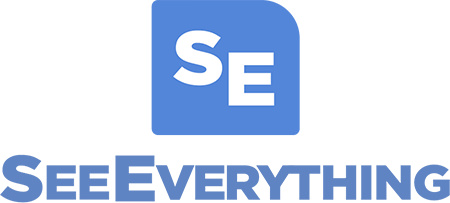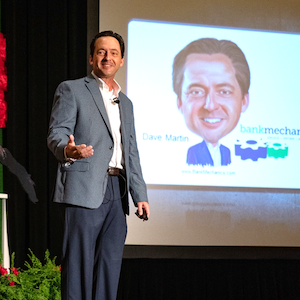 |
 |
Your luck is how you treat people. » Bridget O'Donnell
Days of Future Past
Earlier this week, we received a letter from one of the banks with which our household has a relationship. In bold print on the outside of this envelope was, “A branch near you is closing soon.”
Sure enough, that bank is closing “our branch.” I felt a touch of sadness, but not entirely for banking reasons.
One of my favorite pictures in my office is of my now 17-year-old at that branch’s grand opening celebration. He was 5-years-old then.
In it, he is wearing a cowboy hat while sitting on a live longhorn steer. What can I say? Branch openings tended to be audacious in Texas back in the day.
So were the sizes of most new branches.
I vividly remember a regional manager showing me around the new facility and touting this “branch of the future.” The branch has 8 private offices, meeting rooms, a huge lobby and waiting area, a concierge kiosk, 24-hour indoor ATM access, safety deposit boxes, and a four-lane drive through.
Twelve years later, it is closing. The bank isn’t in trouble. It’s a national player and doing fine.
The market isn’t bad. The area around that branch is booming. The population and local businesses have exploded there during the past 10+ years.
Still, I’ve suggested to my wife for years that the economics of that huge branch didn’t seem to make sense anymore. It was eventually staffed with 5 FTE.
Most offices were empty. The concierge kiosk became an unmanned relic. That onetime-showcase branch eventually felt like a museum.
We mostly bank online and visited that branch only 3 or 4 times a year. Yet my wife is now shopping for a new bank or CU close to our neighborhood. There is a multitude of options.
Access to a branch and actual bankers remains a driving factor for most households. We can bank online with anyone. It doesn’t differentiate.
Convenient physical access to a branch (regardless of branch size) and engaged bankers still do.
We would not choose or stay with a bank or CU that does not offer competitive technology. But for us, ready access to a branch we may seldom use matters as much as the technology we use often.
That gives many Fintech folks migraines, I know. Gurus are fond of telling us what people can do with technology.
I’m as interested, however, in what customers actually want to do face-to-face.
Strive to put smiles on those faces this week.
Restart the Presses!
A recent service experience with an online printing company reinforced to me the relationship-building power of goodwill gestures. In years past, I would have brought a small printing job to a local printer.
But I couldn’t think of any in my immediate area. If there are, they’re keeping it a secret.
Since I was online searching anyway, I went to this out-of-state company’s website and clicked around.
It was easier than I expected. After a few moments of uploading logos, choosing fonts, paper stocks, etc., I reached the order menu.
The price wasn’t quite as low as the initial “as low as” ads, but I had added a few “extras” along the way.
When I received my order a few days later, I opened the box to find… well, I had goofed up. My logo and some of the fonts were too small.
Granted, it was exactly what I had ordered. The large screen on my desk on which I had proofed the job made the font sizes look fine.
In reality, they simply were not.
Frustrated with myself, and questioning my vendor decision, I used that company’s “contact us” feature to explain that I had made a mistake. I pointed out (twice) that the order was, indeed, exactly what I asked for.
It was not their fault. What I wondered was whether they offered a discount on a second order for goof ups like me.
I was prepared to pay for my own mistake. Instead, I soon received an email from “Carla” expressing that she was sorry the order was not exactly right. (Yeah, well…me too.) Then, she said something that surprised me.
They would let me make the corrections needed, reprint my order, and even ship it to me at no additional cost whatsoever.
I was skeptical. However, they were good to their word, and I received my new materials that same week. My wife laughed at how I instantly proclaimed love for that company. I became a fan of theirs in one (okay, two) orders.
By treating me like a loyal customer from the jump, they created one. And the money they spend on those kinds of gestures apparently comes back to them many-fold.
But “wowing” folks does not have to cost much money. Simple gestures of respect and appreciation impress customers like few things can.
How would you treat your absolute best customer if he or she walked into or by your branch today?
Strive to treat all you encounter today that way, and you may have a few more “best” customers soon.









